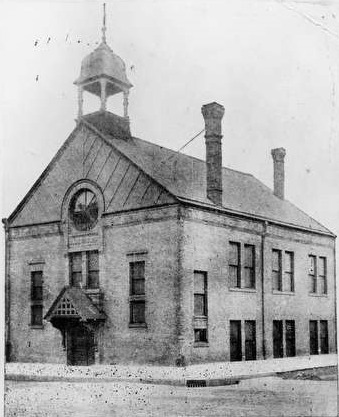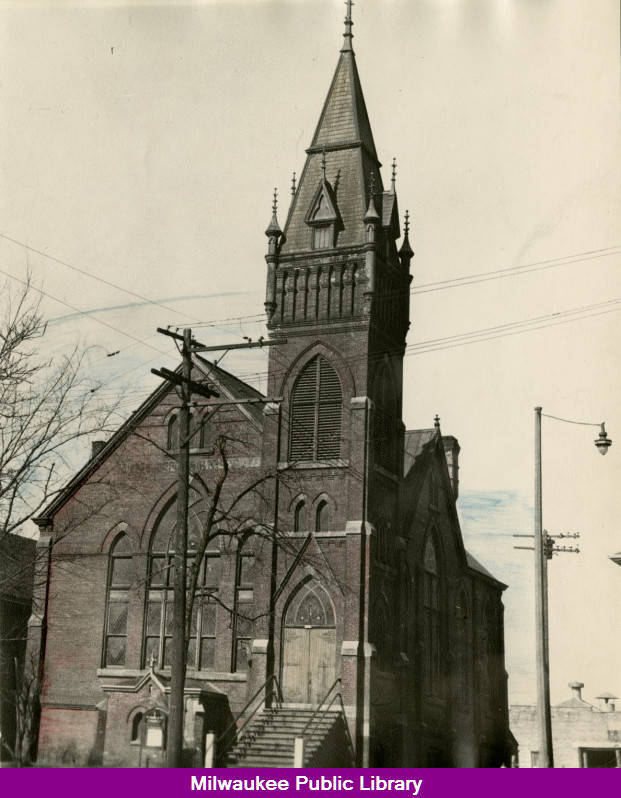St. Mark AME
The oldest African American Church in Milwaukee

One of the most influential churches in Bronzeville.
Milton C. Sernett argued that religious belonging was an elemental bond of group identity, with communities defining themselves around sets of religious beliefs, symbols, and rituals. African Americans have historically had a strong bond with religion. In Bronzeville, the presence of religious institutions was paramount. St. Mark A.M.E. is the oldest historically black congregation in Milwaukee. Founded in 1869, and initially being called First African Methodist Episcopal Church, it varied its physical locations over time to serve the needs of its congregation. From its first meeting being held in a rented room along what is now Wisconsin Avenue in 1869, St. Mark commissioned the first church constructed for an African American congregation in Wisconsin with its building on 4th and Kilbourn Avenue in 1887. As the Great Migration fostered an increase of African Americans moving to Milwaukee during and after World War II, the congregation of St. Mark would grow, fostering the move to a location on 11th Street near Reservoir Avenue in 1953. St. Mark’s combination of size, history, and influential congregation members made it a religious and social center for African Americans in Milwaukee.
The vast size of the congregation of St. Mark included members of various skills and social statuses. Vel Phillips, Milwaukee’s first alderwoman and the first African American on its Common Council, was a member. Myra Evans, a graduate from Lincoln High School and one of the first African American crossing guards in Milwaukee, who assisted pupils coming and going from 9th and Walnut streets, was a member of St. Mark since her childhood, and served 10 years as president of its food pantry. Milwaukee’s first African American welfare case worker and a chairman of the Milwaukee Housing Authority, Cecil Fisher, was a pastor of St. Mark in the late 20s to the early 30s. Phillips, Evans, and Fisher, all residents of Bronzeville, show the vibrancy of the individuals who made up the congregation of St. Mark A.M.E.
Under Mayor Daniel Hoan, the construction of the North-South Freeway I-43 required the elimination of many homes, businesses and gathering spaces in the Bronzeville area. Under the pretext of “urban renewal,” city officials cited the need to create a way for citizens in out-lying areas to be able to travel back and forth to downtown Milwaukee more easily; however, this occurred at the expense of entire communities which were displaced by the freeway’s construction. St. Mark would also suffer from this, as the construction of I-43 caused the demolition of the church’s 11th Street building. While the church would move from the Bronzeville area, it continued to maintain its strong connection to the expanded African American community with its prime location on 1616 W. Atkinson Ave.
Images

